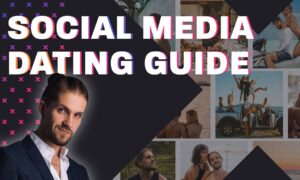“Get now Daniel Throssell – Email Copywriting Compendium. Download Email Copywriting Compendium by Daniel Throssell for a cheap price.
Here’s a sampling of the 101 rules included in the Compendium:
(Rule #1) The most crucial word in copywriting (and it isn’t “you,” “free,” “fun,” “consistency,” or anything else banal – I promise it will genuinely enlighten you)
I prepared a list of the 10 elements of must-read email lists (Rule #2) for my own personal usage.
Rule #3: Before sending any email, ask yourself one question.
The perfect email length – and yes, I do keep track of the words (Rule #9)
The THREE obstacles to getting your email read (the first is getting it opened; the other two I’ve never heard anyone teach!) AND HOW TO GET RID OF THEM (Rules #12, #13, and #14 are applicable.)
Why sending a sales message via email in 2021 is a BAD idea (15th Rule)
A numerical rule for how often and how difficult to sell in your emails (Rules #17 and #18)
Why “being your authentic self” is BAD advise for emails (Rule #22) What Australia’s bestselling novelist taught me about producing emails that people want to subscribe to for years (Rule #20)
A disturbing tactic for mentally abusing your readers into revering you – frankly, I’m not sure if this will work for anybody else, but if you’re on my list, you’ve definitely seen ME do this to you, which is why you’re reading this sales page right now… (Rule #24) The most amazing storytelling approach in history – I use it virtually every day (Rule #25)
Why and how it’s permissible to make up “untrue” stories for your emails (Rule #26)
How to get tale ideas from everyday life (hint: you’re looking in the wrong spot!) (#27 Rule)
Have you ever had the feeling that your sales email isn’t quite right? yet you’re stumped as to why? I’m almost certain it’s because one of the three things in Rule #28 is missing from your email’s lead…
What to do if you’re writing for a client and can’t persuade them to tell you personal experiences (Rule #29), and…
Why it’s important to remember that email tales aren’t only about “telling what happened”! (#30 Rule)
To riff on this, let’s take a Gary Halbert-style break.
In my Compendium, Rule #30 is titled:
“The Sitcom Secret to Telling Great Email Stories”
And… it’s one of my email philosophy’s most crucial rules.
See, if you want to create a long-term relationship with your audience, there is a CRITICAL part of email storytelling that you must have.
The cunning thing is that, while this device is required for email storytelling, it is possible to tell a decent story without it. As a result, most people aren’t even aware that they aren’t doing it.
Furthermore, I bet you have never been taught anything like this before. Because it’s something I discovered on my own, rather than from a book or a course. And it’s certainly not evident in any way.
Thankfully, learning and using it isn’t all that difficult.
And I tell you everything you need to know about it in Rule #30.
Here are a few more of the mind-blowing copywriting tips you’ll find in the Compendium…
I have a solution for this that I have never heard taught anywhere else (Rule #31): how to combine telling’me-focused’ stories with ‘you, you, you’ writing about the reader.
I’ll provide you a model for mentally “picturing” the EXACT themes to write about and what to say if you compose emails for a client (Rule #32).
Why you should literally write your emails backwards! (Rule #33) Why “write as though you’re writing to a friend” isn’t the finest email advice — and who (not who!) I picture writing for instead of a “friend” (#34 Rule)
Why you should never use queries in a sales email, such as “Do you have bothersome tummy fat?” and what you should do instead (this rule will change your ENTIRE copywriting paradigm) (#35 Rule)
Have you ever read the emails of other (even famous) copywriters and thought the stories they used for “StOrYseLLinG” were a little… boring? I’ll explain why you felt that way – and how to choose stories that DO SELL (Rule #36).
4 ways to never run out of email ideas again – if you need to compose a lot of emails for clients, this alone could make the purchase worthwhile (Rules #37-#40).
My favorite technique to use anecdotes from market research in emails (Rule #41) The single most compelling email tactic in the world (hint: it’s more of a ‘genre’ than a ‘tactic’) (Rule #43) Why you should never compose an email when you’re upset! (Rule #47) The single most effective approach to get people to pay attention to and participate with your emails. (While this strategy is “free” in terms of money, be aware that it WILL lose you some of your most loyal subscribers – you’ll have to determine whether it’s worth it.) (#48 Rule)
Why you should disregard David Ogilvy’s subject line advice (#55 Rule)
My unique “question-setup” approach to subject lines — and why it’s superior to the commonly taught “curiosity gap” hypothesis (Rules #56 and #57)
When should you use long or short subject lines? (#58 Rule)
If you’re in a hurry, there are two “quick-fix” techniques to fix a terrible subject line. (#59 Rule)
A clever (and quick) technique to test the open rates of your subject line using someone else’s email list… PRIOR TO SENDING YOUR EMAIL! (I nearly accidentally found how to do this one day and have been doing it ever since — if you do it the way I teach you, I’m very sure you won’t even need to ask “permission”) (#61 Rule)
When to use someone’s name in a subject line — and when not to (Rule #62) Why “excellent” subject lines can irritate even your most loyal subscribers — and how to avoid it (Rule #64)
Why it’s dangerous at best, and plain idiotic at worst, to study emails from certain prominent email copywriters (Rule #67)
The ideal length of a welcome series (Rule #69) is not zero or one.
Why you should never ASK people to whitelist your emails, but rather TRY to get them to do it (and how to do it) (Rule #70)
How to avoid making people angry when selling to them (Rule #71)… Then, expanding on that…
A “politically incorrect” approach for persuading even your most vehement opponents to adopt your views without question! (#72 Rule)
Let’s take another pause to delve more into this one.
Rule #72’s official title is:
“___ Is A Great Mask For Harsh Sales Techniques”
I can’t tell you the words right at the beginning of the statement since that would reveal the rule. (I apologize for the sales page and all.)
But this is one of the MOST POWERFUL ways I’ve ever discovered for selling full-throttle to my email list… in fact, it’s much harder than anything I’ve ever seen… Despite the fact that they adore me for it.
In other words, no matter how hard you try to sell, employing this strategy can nearly totally protect you from appearing “salesy” in your emails.
However, this method is much more than just a sales strategy.
In fact, as a broad persuasive method, it’s highly effective… It’s even being used to full effect on both sides of the current culture warfare in the West. It’s used by proponents of “woke” culture as well as those who criticize it.
You may certainly use it in your sales emails, whether you choose to utilize it for more sinister purposes or not.
And it’ll make people love you instead of hating you for your continual hawking.
Here are even MORE fantastic copywriting secrets you’ll discover inside the Compendium if you decide to purchase it…
Why you shouldn’t exclude buyers from receiving emails about items they’ve already purchased! (#73 Rule)
How to use email to sell luxury items, wine, and even ART (Rules #74, #75, and #76)
Should you presume that your past emails have been read? (#77 Rule)
How frequently should you email your list (Rule #78)?
The maximum amount of time you should spend writing an email – if it takes you longer, here’s what you should do (and it’s not “use a timer”) (Rule #79)
Why bullets are virtually never appropriate in a sales email (Rule #85)
Rule #86: How to Write a Better ‘Cart Abandonment’ Sequence
Yes, I give a specific number of days (Rule #87) for the best length of an email sale.
Why should you avoid sending your strongest sales pitches during an email sale (Rule #89)?
Two emails (Rules #94 and #97) that are a bad idea (and that you’re definitely putting in every sales funnel you design)
When should you send your final email reminder about an offer before the cart closes (Rule #98)?
The single most crucial thing to remember when you make a mistake, such as sending an email to hundreds of thousands of individuals with the erroneous name (Rule #101).
PROOFS




